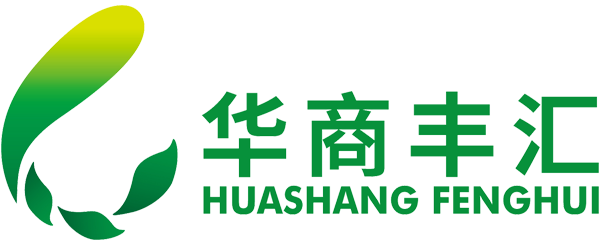Complete and detailed introduction of container specifications in international logistics
Containers include dry container (DRY CONTAINER), bulk container (BULK CONTAINER), liquid container, reefer container, and some special special containers, such as automobile container, livestock container, animal skin container, etc. There are three series of international standard containers with thirteen specifications. In international maritime container transportation, the IAA type (ie 40 feet) and the IC type (ie 20 feet) are the two most commonly used. The IAA type container is a 40-foot dry cargo container with a content of up to 67.96m3. The general deadweight is 3800kg, the deadweight is 26.68 tons, and the total deadweight is 30.48 tons. The IC type is a 20-foot container with an internal volume of 33.2m3. The deadweight is generally 2317kg, the deadweight is sub 17.9 tons, and the total deadweight is 20.32 tons.
Container type:
There are REEFER CONTAINER, abbreviation RF, DRESS HANGER CONTAINER, OPEN TOP CONTAINER abbreviation OT, FLAT RACK CONTAINER abbreviation FR, tank container (TANK CONTAINER) abbreviation TK , Refrigerated containers, platform containers (PLATFORM CONTAINER), ventilated containers (VENTILATED CONTAINER), insulated containers (INSULATED CONTAINER). The open-top container is used to load heavy goods such as glass plates, steel products, machinery, etc., which can be loaded and unloaded from the top by a crane. The top of the open-top container can be opened or has no fixed surface. The frame container is a container composed of the bottom surface of the box and the surrounding metal frame, which is suitable for large, overweight, and light foam cargo. A canned container is a container composed of a bottom surface of a box, a tank body and a surrounding frame, and is suitable for liquid cargo.
Container size:
Maximum length, width, and height inside the container. The height is the distance from the bottom surface of the box to the bottom of the top plate, the width is the distance between the two inner liners, and the length is the distance from the inner panel of the door to the inner liner of the end wall. It determines the internal volume of the container and the maximum size of the cargo in the container.
Dry containers (DRYCONTAINER) commonly used internationally are:
1. The outer size is 20x8x8 feet 6 inches, referred to as 20 feet container (inner diameter: 5898*2352*2390mm);
2.40x8x8 feet 6 inches, referred to as 40 feet container (inner diameter: 12024*2352*2390mm);
And the more commonly used 40x8x9 feet 6 inches, referred to as 40 feet tall cabinet.
It is 11.8x2.34x2.68 meters. The gross weight of the distribution is generally 26 tons, and the volume is 68 cubic meters.
45-foot high cabinet: The internal volume is: 13.58x2.34x2.68 meters, the gross weight of the distribution is generally 29 tons, and the volume is 86 cubic meters;
20-foot open-top cabinet: The internal volume is 5.89x2.32x2.31 meters, the gross weight is 20 tons, and the volume is 31.5 cubic meters;
40-foot open-top cabinet: The internal volume is 12.01x2.33x2.15 meters, the gross weight of the distribution is 30.4 tons, and the volume is 65 cubic meters;
20-foot flat-bottom container: internal volume 5.85x2.23x2.15 meters, gross weight 23 tons, volume 28 cubic meters;
40-foot flat-bottom container: internal volume 12.05x2.12x1.96 meters, gross weight 36 tons, volume 50 cubic meters.
What do GP, HQ, OT, FR, HT, RH, GP/DC mean?
The common ones are GP/DC which refers to dry containers. There are many types of special containers, mainly divided into: Reffer Container, Dress hanger Container, Tank Container, Open Top Container) and Flat Rack Container (Flat Rack Container) to meet the special needs of special groups.
1. GP (flat cabinet): GP stands for General Purpose (Containers), which is generally called a flat container. For example, 40GP refers to a 40-foot ordinary container.
2. HQ (high cabinet): HQ stands for High Cube (containers). For example, 40HQ refers to a 40-foot tall container; the difference between the two is that HQ is higher than GP.
3. OT (Open Top Cabinet): OT is the abbreviation of Open Top, which refers to an open top cabinet, that is, a cabinet with no top of the box but a tent on the top of the box. OP (OPEN TOP), can be loaded on top, suitable for super large cargo such as machinery.
4. FR (frame cabinet): FR stands for frame container. This kind of container has no top plate and no left and right side plates around, only front and rear plates, corner posts and front and rear roof beams. At the same time, the front and rear plates are foldable, and the floor is folded. As a whole, it looks like a flat panel, so the Guangdong area is often called "flat cabinet". In addition, the floor of this kind of container is very thick, and the overall weight is heavier than that of ordinary containers. It is mainly used to install large-scale machinery. FR (FLAT RACK), specially designed for heavy cargo loaded from the top or both sides. The frame cabinets are mainly loaded for the transportation of large-scale machinery and equipment with ultra-long, ultra-wide, and ultra-high weights and the transportation of heavy-weight bulky goods. Such as heavy machinery, steel, wood, etc., specifically ball mills, tower cranes, elevators, steam turbines, generators, pile drivers, boilers, tower cranes, condensers, sugar equipment, etc.
5. HT (Dress hanger Container): As the name suggests, this is specially used to hang clothes. There are many crossbars on the upper side beam of this container, and each crossbar has several bars. Belt buckles, nylon buckles or ropes use the hooks on the hangers to hang clothes directly on the buckles or ropes.
6. RH (High Freeze Refrigerator) refrigerated containers mainly load goods: food: meat, fish, aquatic products, biscuits, chocolate, chemical products: mainly fine chemical products; such as perfume, air freshener, and plastic products.
7. RF (Freezer) Reffer Container: In international practice, the appearance of the freezer is white, which is set by the principle of black heat absorption and white constant temperature. The freezer parameters are divided into 20-foot freezer: external dimensions 6058*2438*2438 (mm), internal dimensions 5391*2254 (mm), nominal height 2130mm. The volume is 25.9, the dead weight is 2750kg, the total weight is 24000kg, and the load is 21250kg. 40-foot freezer: external dimensions 12192*2438*2591 (mm), internal dimensions 11480*2235 (mm), nominal height 2235mm. The volume is 57.3, the dead weight is 4750kg, the total weight is 30480kg, and the load is 25730kg.
8. TC (Tank Container): also known as liquid container. It is a special container manufactured for the transportation of liquid goods such as food, medicine, and chemicals. Its structure is to fix a liquid tank in a metal frame. It consists of a tank body and a box body frame. When loading, the goods enter through the top loading hole of the tank, and when unloading, they flow out through the discharge hole or suck out from the top loading hole.




